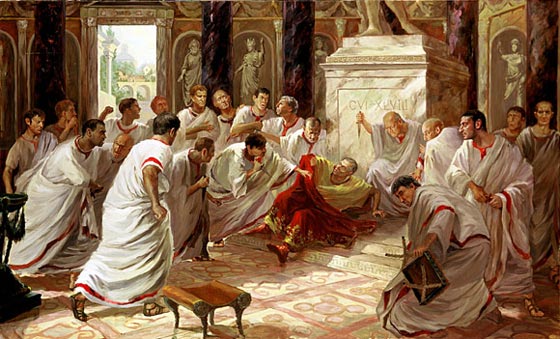By happy coincidence, I happened to read this a couple days ago:
The Romans kept notes on panels of wood on which a layer of wax was poured as a writing surface. Two of the tablets would be hinged so that the wax surfaces could be closed against each other, protecting them; these were called pugillares, or table-books. Notes were inscribed on the wax with a cylindrical bar of iron or bronze, on which one end was sharp and the other flattened, so it could be used to rub out errors. The tool was called a stylus, plural styli, which gave us the root of the word stiletto.
The stylus made a fair dagger. When Caesar was surrounded by the senators who would assassinate him, he grabbed the arm of Casca and pierced it through with his stylus before being cut down by the others. According to the historian Suetonius, Caligula persuaded his followers to use their styli to stab to death one of his enemies in the senate. Seneca wrote that a Roman knight named Erixo, who had beaten his son to death, was attacked by an outraged mob whose members stabbed him nearly to death with their styli.
As no weapons were allowed to be worn in Rome, styli were intentionally made large to serve in that capacity. In an attempt to control the menace, the Romans passed "stylus control" legislation, banning the use of iron in their manufacture in favor of ivory or bone.
Early failures in weapon control laws....
Link:
http://bowieknifefightsfighters.blogspo ... sword.html" onclick="window.open(this.href);return false;
This is from a very interesting site, if you are at all interested in Bowie knives and other sharp and edged things:
http://bowieknifefightsfighters.blogspot.com/" onclick="window.open(this.href);return false;

